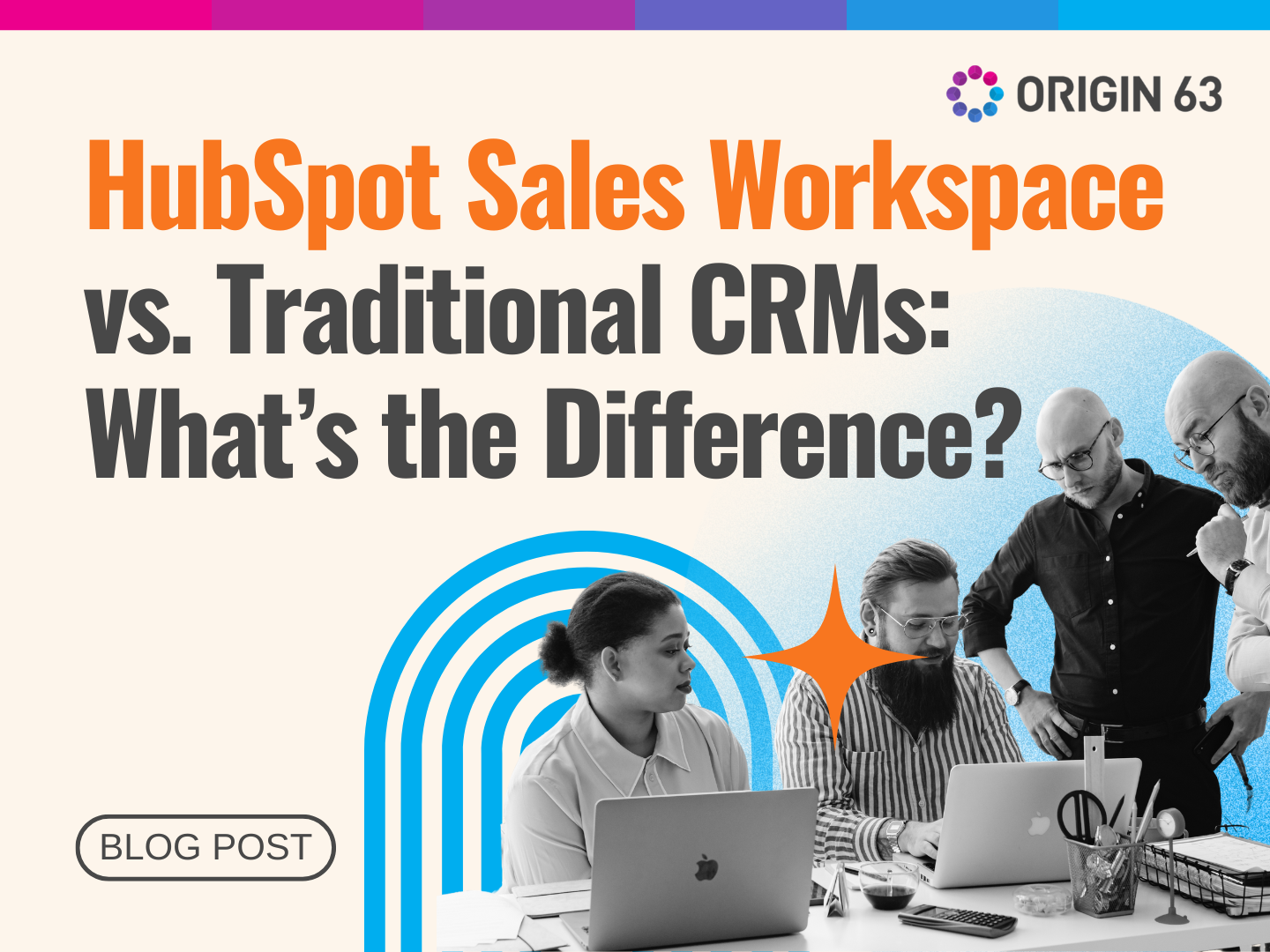If you want your business to grow, you need to do two things well: get new customers and keep the ones you already have. That’s called customer acquisition and customer retention.
The hard part is that if your sales process is messy or unclear, both of these goals become harder to achieve. Deals slip through the cracks, and customers feel forgotten. HubSpot’s deal management tools can help you organize your pipeline and stay on top of every deal.
In this blog, we’ll show you how to use HubSpot to improve both sides of the revenue equation: winning new customers and keeping them happy for the long haul.
Customer Acquisition vs. Customer Retention

Customer acquisition means getting new customers. It’s all about helping people find your business, showing them the value of what you offer, and guiding them to say yes.
Customer retention means keeping the customers you already have. This includes making sure they’re happy, solving their problems quickly, and giving them reasons to stay and buy again.
Both are important, but they work in different ways.
- Customer acquisition helps you grow fast. You get more people in the door.
- Customer retention helps you grow smarter. You keep the people who already trust you and increase their value over time (this is called customer lifetime value).
Increasing customer retention by just 5% can boost profits by 25% to 95%. That means holding onto your customers can be even more potent than finding new ones.
With the right tools in HubSpot, you don’t have to choose one or the other. A well-organized sales pipeline can help you do both by helping your team close new deals faster and track customer needs over time to build stronger relationships.
Why Structured Deal Pipelines Matter
A well-built deal pipeline gives your team a clear path to follow, from first contact to closed deal. It helps everyone stay focused, know what’s next, and follow up at the right time. This leads to faster sales and better customer experiences.
For customer acquisition, a structured pipeline means no lead gets ignored. Your reps can move quickly and close more deals without missing key steps.
For customer retention, it keeps things from falling through the cracks after the sale. You can track renewals, upsells, or support needs and make sure every customer gets the attention they deserve.
And here’s the real cost of not doing this right: in SaaS, it can cost four to five times more to acquire a new customer than to retain an existing one. A strong pipeline helps you protect your time, budget, and relationships, so your business can grow in smarter, more sustainable ways.
How to Use HubSpot’s Deal Stages to Win More Deals

To attract more customers, you need a sales process that’s easy to follow for both your buyers and your team. Deal stages break down your sales process into clear steps. They help your team know exactly what’s happening with each deal and what to do next.
In HubSpot, deal stages are part of your deal pipeline. You can customize them to match your process. For example, if your team usually books a call, gives a product demo, and then sends a contract, you can make each of those a deal stage.
Here’s how to make the most of them:
1. Customize Deal Stages to Match Your Real Process
Every sales team has its own flow. Some book a discovery call first. Others send a proposal right away. That’s why HubSpot lets you create custom deal stages.
You can name each stage based on your team’s actual steps, such as “Demo Completed” or “Budget Approved”, so your pipeline accurately reflects how your sales process works.
For example, let’s say your sales process includes booking an intro call, sending a quote, closing the deal, etc.
You can make each of these a stage in your HubSpot pipeline. That way, every rep knows where each deal stands and what comes next. This reduces confusion, improves team handoffs, and helps new representatives ramp up more quickly.
How to do it:
- Go to Settings > Objects > Deals
- Click the Pipelines tab
- Choose a pipeline and hit + Add stage
- Set the name, mark if it’s open or closed, and assign a probability (more on that next)
This structure helps your team stay aligned and makes it easier to spot delays before they become problems.
2. Use Deal Probabilities to Forecast Revenue
Each deal stage can have a probability attached to it. This shows how likely it is that a deal at that stage will close. For example, a deal in “Contract Sent” might have a 90% probability of closing, while a deal in “Initial Contact” might only have a 20% chance.
HubSpot uses these probabilities to calculate forecasted revenue, also called weighted revenue. This gives you a better sense of how much income might come in, not just based on total deal size, but on deal health.
Why this matters:
- Helps sales managers make smarter projections
- Supports planning and goal-setting
- Keeps execs and finance teams informed
Let’s say your pipeline has $100,000 in deals, but most of them are early-stage. With probabilities set, you can see that realistically, only $40,000 is likely to close. That’s the number you should plan around.
3. Set Required Properties to Keep Data Clean

One of the most powerful ways to improve how your team uses deal stages is by requiring certain information to be filled in before a deal can move forward.
These are called conditional stage properties in HubSpot.
For example, when a deal moves to “Proposal Sent,” you can require the rep to enter the decision-maker’s name. At “Negotiation,” you might ask for the expected close date or notes about pricing objections.
This helps your team gather key details early on, instead of scrambling for them later.
To set it up:
- Go to Settings > Objects > Deals > Pipelines
- Choose a pipeline
- Click the Edit properties button under any stage to set which fields are required
This step ensures your pipeline doesn’t just look organized, but works the way it should.
4. Automate Tasks and Alerts When a Deal Moves
You can use HubSpot’s automation tools to trigger helpful actions when a deal changes stages. This keeps your team from forgetting follow-ups or missing key steps.
Here’s what you can automate:
- Create a task (e.g., remind the rep to follow up 3 days after a demo)
- Send an internal email (e.g., alert your legal team when a deal hits “Contract Sent”)
- Kick off a workflow (available in Sales Hub Pro and Enterprise) to launch multi-step automations like email sequences, Slack alerts, or lead scoring updates.
Let’s say a deal hits “Demo Completed.” You can automatically create a task for the rep to send next steps, send a Slack message to the sales manager, enroll the lead in a follow-up email sequence, etc.
It helps make your sales process more consistent, speeds up your follow-up, and reduces errors and delays that might cost you the deal.
And that matters because customer acquisition costs have risen by 60% over the past five years, especially in digital spaces. You can’t afford to waste a single lead.
Using Custom Properties to Boost Customer Retention

Winning a new customer is great, but keeping them is what drives long-term growth. HubSpot helps with this, too. One of the most powerful tools for managing relationships after a deal closes is custom properties.
Custom properties let you track important customer details in your CRM. You’re not limited to name, email, and deal amount. You can add fields for anything that matters to your business, like subscription type, renewal date, favorite product features, etc.
This is the kind of data that helps your team deliver personal, helpful service. And when customers feel understood, they tend to stay.
1. Track What Matters Most to Each Customer
You can create custom fields that match your business model. For example, if you offer yearly software subscriptions, you can add a Renewal Date field. If you sell in different tiers, you can track Plan Level or Add-ons Purchased.
Having this data handy helps your success or support team:
- Know when to check in
- Suggest upgrades or new features
- Spot at-risk customers before they churn
When you can see the full story for each customer, it’s easier to keep them happy and turn that one-time deal into a long-term relationship.
2. Segment and Personalize Outreach
Once you’ve added the right custom properties, you can use them to filter, segment, and personalize your communications.
Let’s say you want to send a check-in message only to customers who’ve been with you for 9 months. Or maybe you want to run a promo for customers using a certain add-on. With custom properties, that’s easy. You can filter your contact list based on any field you’ve created.
This keeps your retention efforts smart and targeted, instead of sending the same message to everyone and hoping for the best.
Existing customers are 50% more likely to try new products and spend 31% more than new customers. That’s a huge opportunity for growth, just by staying in touch with people who already trust you.
3. Keep Teams in Sync Post-Sale

Custom properties also help bridge the gap between your sales and post-sales teams. After a deal closes, your customer success team can see exactly what was promised, what the customer needs, and what next steps are required—all in one place.
You can even create properties like:
- “Onboarding Stage”
- “Success Manager Assigned”
- “Renewal Risk Level”
This kind of visibility means no one gets left behind after the sale, and that helps your company stay focused on building lifetime value, not just short-term wins.
Automating Your Pipeline to Save Time and Improve Follow-up
Even with the best sales team, human error happens. A follow-up gets delayed. A task is missed. A renewal is forgotten. That’s why automation is such a game-changer.
In HubSpot, you can set up deal automation to trigger actions when a deal moves to a new stage. These automated actions help keep the process smooth for both customer acquisition and customer retention.
1. Automate Close Dates for Accuracy
HubSpot updates the Close Date of a deal when it moves to a closed stage. This might sound small, but it keeps your sales reports accurate and helps with revenue forecasting.
You can:
- Automatically set the close date to today when a deal is marked “Closed Won”
- Clear the close date if a deal is reopened (e.g., moved back to “Negotiation”)
It’s a small way to keep your pipeline clean, but it saves your team a lot of time in the long run.
2. Trigger Tasks and Notifications Based on Deal Stage
You can also set up automations that trigger internal tasks or emails when a deal moves forward. For example:
- When a deal reaches “Demo Completed,” assign a follow-up task to the sales rep.
- When a deal moves to “Contract Sent,” send an alert to your legal or finance team.
- When a deal hits “Closed Won,” automatically notify your customer success team so onboarding can begin.
These automations reduce the chances of delay or confusion and make sure every part of the team is in sync.
For Sales Hub Professional and Enterprise users, you can take this even further using workflows, which let you add delays, conditional branches, and multiple follow-up actions across tools.
3. Use Automation to Keep Customers Engaged Post-Sale

You can also use workflows to manage customer retention, not just acquisition. After a deal is marked “Closed Won,” you can:
- Enroll the customer in a welcome email series
- Schedule a 30-day check-in task
- Add a renewal reminder for 11 months from now
This kind of follow-up shows the customer you care—and helps prevent churn before it happens.
And that’s more important than ever. From 2014 to 2019, customer acquisition costs rose by 60–75% across industries. In the years since, costs have continued to climb, especially for digital businesses.
You can’t afford to lose people once you’ve earned them. Automation helps ensure that doesn’t happen.
Build a Smarter Sales Process That Grows with You
Getting new customers is important. Keeping them is what makes your business last. With HubSpot’s deal management tools, you don’t have to choose between the two—you can do both.
Using clear deal stages, helpful custom properties, and time-saving automation, you can build a pipeline that works for your entire team. You’ll close more deals, stay on top of every opportunity, and build stronger relationships that increase customer lifetime value.
The best part? You don’t need to guess your way through it. HubSpot gives you everything you need to stay organized, move faster, and grow smarter.
Start simple. Map your real sales process. Add only the fields that matter. Automate what you can. And always keep your customers—new and old—at the center of your system.
Work with Origin 63 to Make HubSpot Work for You
Whether you’re just starting with HubSpot or want to get more out of it, we can help. At Origin 63, we know how to set up deal pipelines, automations, and CRM tools in ways that support real growth, not just more clicks.
Let’s build a system that helps you win and retain the right customers. Reach out today, and we’ll make sure HubSpot fits your goals, your team, and your future.




.png)
.png)








.png?width=90&height=90&name=Arrows%20Partner%20Badge-test%20(1).png)

